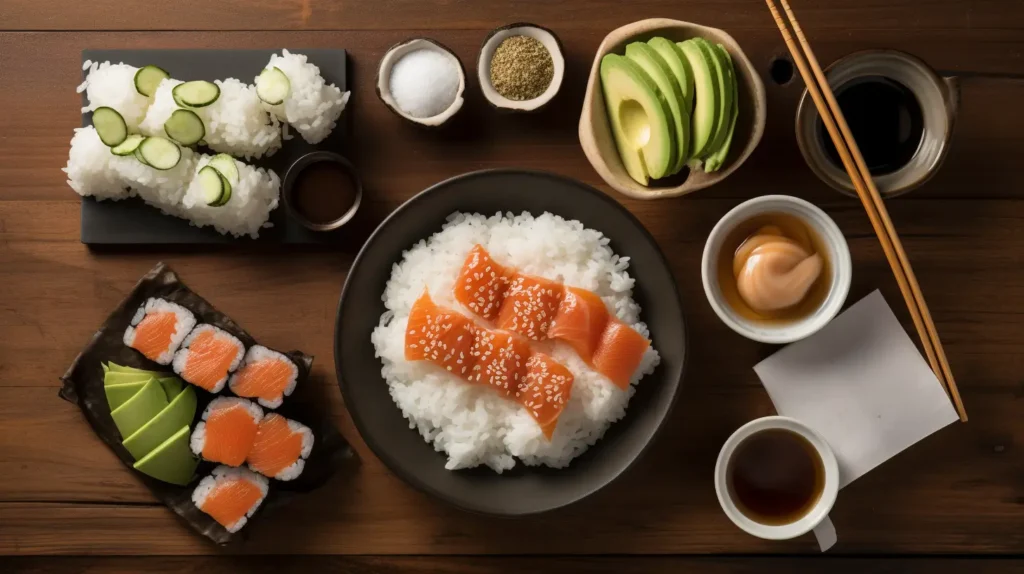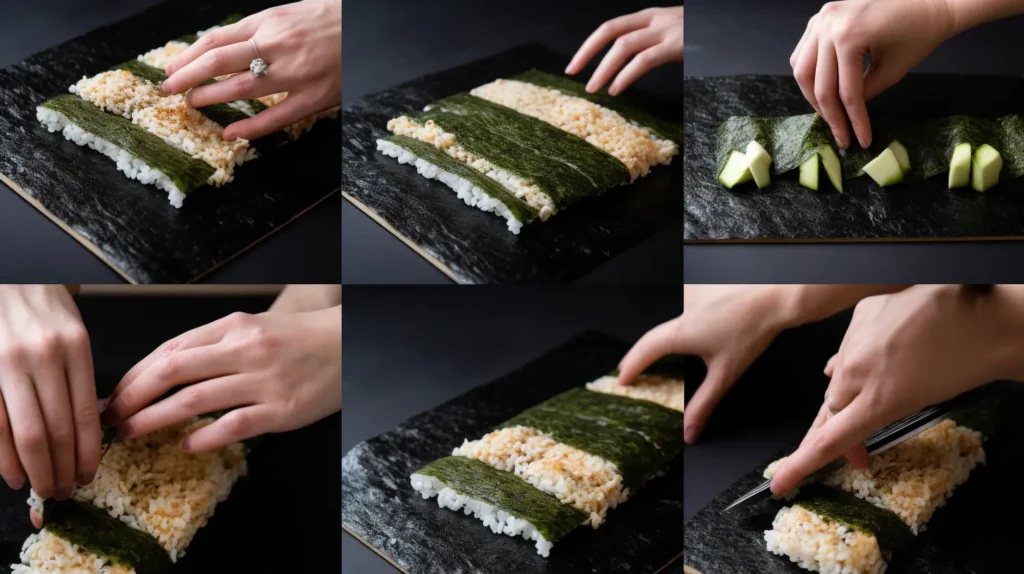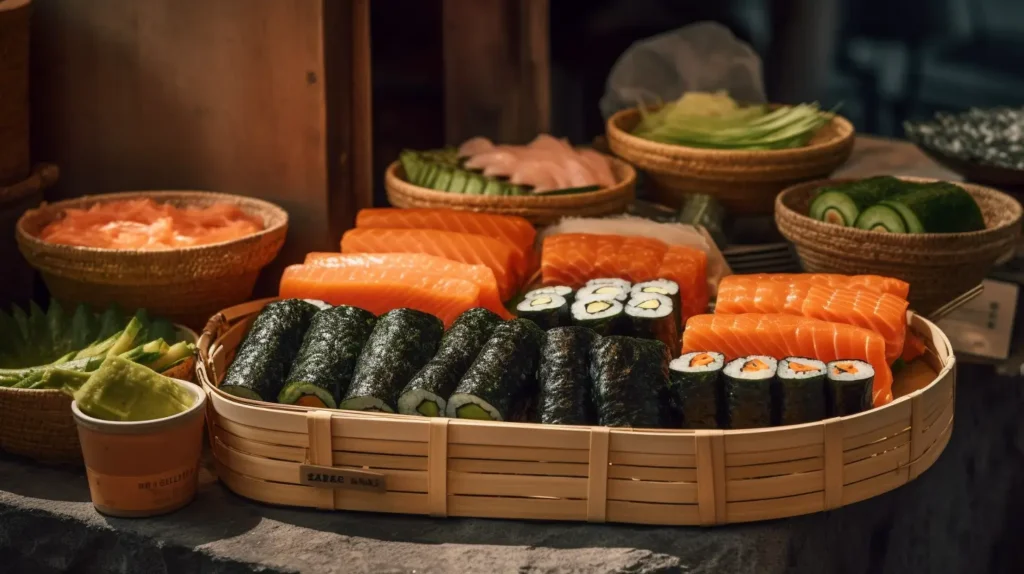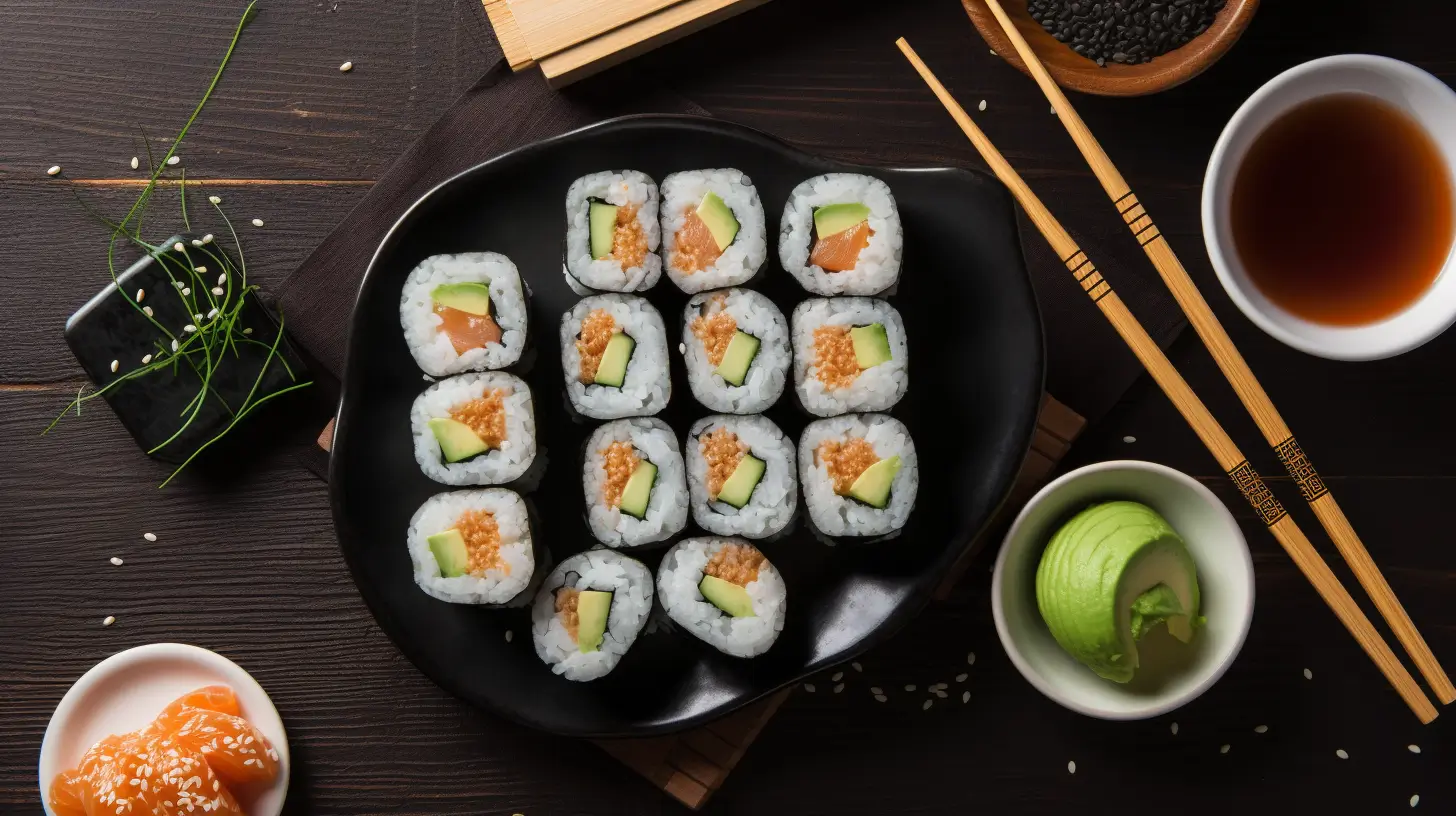Table of Contents
Introduction
Sushi has an almost magical ability to transform lunch into an experience that feels both indulgent and satisfying. If you’ve ever enjoyed the delicate flavor of a salmon sushi roll at your favorite Japanese restaurant, you know what I’m talking about. But what if I told you that you don’t have to leave the comfort of your kitchen to recreate this classic dish?
The first time I tried making sushi at home, I was intimidated. Would I mess up the rolling? Would the flavors work? As it turns out, making salmon sushi rolls is easier than you’d think, and the results? Totally worth it. This guide will walk you through everything you need to know about crafting your own salmon sushi rolls. Whether you’re making lunch for yourself or preparing something special for friends, you’ll love how fun and customizable this dish can be.
Let’s dive in and turn your lunch into something extraordinary.
If you’re a fan of customizable lunch ideas, this recipe pairs beautifully with other classics like Bagels and Lox: A Flavorful and Versatile Lunch Classic or a hearty Hot Dogs and Beans Recipe: A Comforting Classic for Lunch. Ready to roll? Let’s dive in.
What is a Salmon Sushi Roll?
Before we get into the step-by-step process, let’s talk about what makes a salmon sushi roll so special. At its core, a sushi roll (or maki) consists of vinegared rice, fresh fish or vegetables, and seaweed (nori), all rolled together in a compact, flavorful package. The salmon sushi roll is one of the most popular variations, combining the buttery richness of fresh salmon with the chewy texture of seasoned sushi rice and the umami taste of seaweed.
While sushi has its roots in Japan, dishes like the Philly Roll Sushi: Your Perfect Lunchtime Delight show how global twists have added variety to this traditional meal.
A Bite of History
Sushi originated in Japan as a way of preserving fish by fermenting it with rice. Over time, the dish evolved into the fresh, vibrant rolls we know today. Salmon wasn’t traditionally used in Japanese sushi—it gained popularity in the West and eventually became a global favorite. Today, salmon sushi rolls are a staple in sushi restaurants worldwide.
What Makes Salmon Ideal for Sushi?
- Flavor: The mild, rich taste of salmon pairs beautifully with rice and other ingredients.
- Texture: Its firm yet tender consistency makes it easy to slice and roll.
- Nutritional Value: Packed with protein, omega-3 fatty acids, and essential vitamins, salmon is as healthy as it is delicious.
Why Salmon Sushi Rolls Are a Great Lunch Option
Quick and Convenient
Salmon sushi rolls are perfect for busy days when you want something tasty but don’t have hours to spend in the kitchen. Once you’ve mastered the technique, you can make a batch in under 30 minutes. They’re also great for meal prepping—just make a few rolls the night before, and you’ll have a ready-to-go lunch that’s portable and satisfying.
Nutritional Powerhouse
When it comes to healthy eating, salmon sushi rolls check all the boxes:
- Lean Protein: Keeps you full and helps with muscle repair.
- Omega-3 Fatty Acids: Supports heart health and brain function.
- Low-Calorie Option: A great choice if you’re watching your intake.
For more quick and healthy lunch inspiration, consider trying this Cottage Cheese Wrap Recipe: Quick and Healthy Lunch Idea. It’s another great option for busy days.
Customizable to Your Taste
One of the best things about making sushi rolls at home is that you can adjust the ingredients to suit your preferences. Don’t like avocado? Swap it for mango. Want a spicy kick? Add some sriracha mayo. The possibilities are endless.
How to Make Salmon Sushi Rolls at Home
Ingredients You’ll Need
Here’s your checklist for the perfect salmon sushi rolls:

| Ingredient | Quantity | Notes |
| Sushi rice | 1 cup | Cooked and seasoned. |
| Nori (seaweed sheets) | 2 sheets | Look for high-quality nori. |
| Fresh salmon | 4 oz | Use sushi-grade only. |
| Avocado | 1/2 sliced | Adds creaminess. |
| Cucumber | 1/2 sliced | Thinly sliced into strips. |
| Soy sauce | For dipping | Choose low-sodium. |
| Wasabi and ginger | Optional | Great for serving. |
Step-by-Step Instructions
1. Prepare the Rice
Begin by preparing the sushi rice as directed on the package. While the rice is still warm, stir in a mixture of rice vinegar, sugar, and salt for seasoning. This step gives the rice its signature tangy flavor. Allow the rice to reach room temperature before using it.
Sushi rice needs to be seasoned just right for the best flavor. Follow this simple guide for perfect sushi rice.
2. Set Up Your Workspace
Lay a bamboo sushi mat on a clean surface and cover it with plastic wrap to avoid sticking. Lay a sheet of nori on the mat with the shiny side facing down.
3. Spread the Rice
Dampen your fingers with water to keep the rice from sticking, then spread a thin, even layer of rice over the nori. Leave about an inch of space at the top to help seal the roll.
4. Add Your Fillings
Arrange thin slices of salmon, cucumber, and avocado along the edge closest to you. Be careful not to overfill, as this can make rolling tricky.
5. Roll It Up
Using the bamboo mat, gently roll the sushi away from you, applying light pressure to create a tight cylinder. Wet the edge of the nori with a little water to seal the roll.
6. Slice and Serve
Dip a sharp knife in water to prevent sticking, then cut the roll into evenly sized pieces. Place the slices on a plate and serve alongside soy sauce, wasabi, and pickled ginger.

Creative Salmon Sushi Roll Variations
Why stop at the basics? Here are some ideas to take your sushi rolls to the next level:
Spicy Salmon Roll
Mix diced salmon with sriracha and mayo before adding it to the roll.
California Fusion Roll
Combine salmon with imitation crab, mango, and a sprinkle of sesame seeds for a sweet and savory twist.
Salmon-Avocado Hand Roll
Skip the slicing and create cone-shaped hand rolls for a casual, snackable option.
Vegetarian Sushi Swap
Not a fan of fish? Replace salmon with roasted sweet potato or marinated tofu for a plant-based version.
Looking for more adventurous recipes? You might also enjoy Birria Quesadillas Recipe: Crispy, Cheesy, and Perfect for Lunch.
Tips for Buying the Best Ingredients
Making great sushi starts with choosing the right ingredients. Here’s what to look for:
- Sushi-Grade Salmon: Always buy sushi-grade fish from a trusted supplier. It’s processed specifically for safe raw consumption.
- Fresh Vegetables: Crisp cucumbers and perfectly ripe avocados will improve your rolls.
- Quality Nori: Invest in high-quality seaweed sheets—they’re more flavorful and less likely to tear.

Common Mistakes to Avoid
Even seasoned sushi makers can slip up sometimes. Here are a few common mistakes and how to avoid them:
- Overfilling the Roll: Keep your fillings minimal to make rolling easier.
- Using Warm Rice: Always let the rice cool to room temperature before spreading it on the nori.
- Dull Knives: Using a sharp knife is crucial for achieving clean and even slices.
FAQs
Which kind of salmon is best for making sushi?
Only use sushi-grade salmon, which has been treated to eliminate harmful bacteria and parasites.
Is a bamboo mat necessary for making sushi?
While a bamboo mat is helpful, you can use a clean kitchen towel wrapped in plastic wrap as a substitute.
Can I store leftover sushi rolls?
Yes, but they’re best enjoyed fresh. If you must store them, wrap the rolls tightly in plastic wrap and refrigerate for up to one day.
What’s a good alternative to salmon?
Tuna, shrimp, or even smoked salmon work well in sushi rolls if you want to mix it up.
Conclusion
Salmon sushi rolls are the perfect combination of flavor, nutrition, and creativity, making them an ideal choice for lunch. With a little practice, you’ll be rolling out sushi like a pro in no time. Plus, the ability to customize your rolls means you’ll never get bored.
So, what are you waiting for? Grab your ingredients, set up your sushi station, and treat yourself to a delicious homemade meal. And don’t forget—if you’ve got any sushi tips or creative ideas, share them in the comments below. Let’s keep the sushi inspiration rolling!

